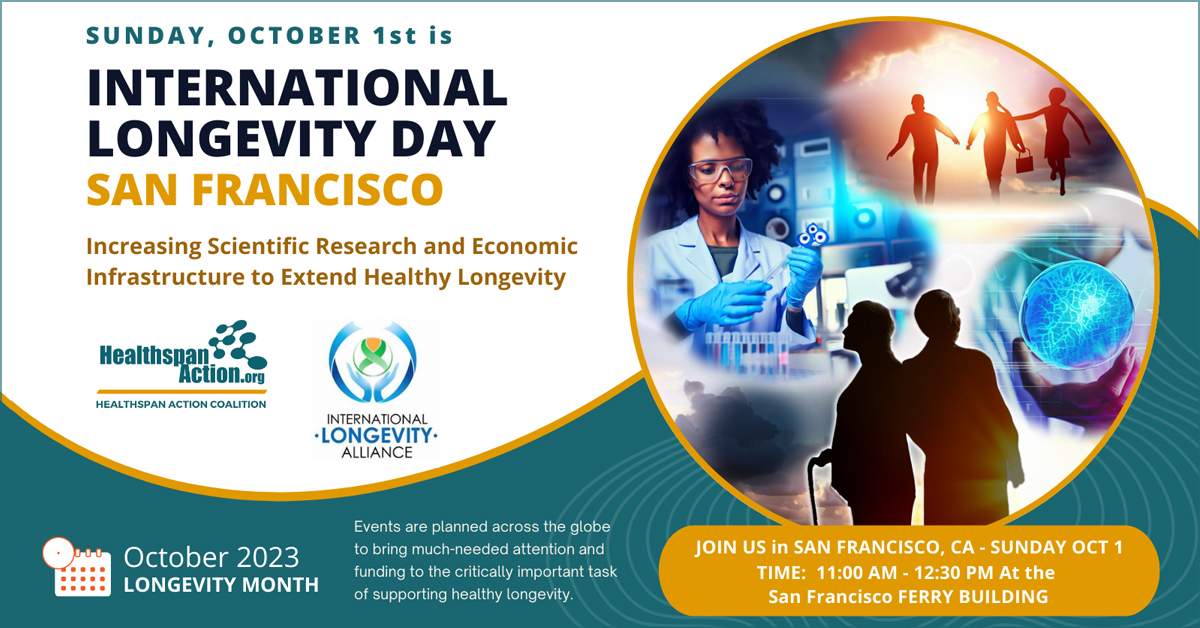OPINION
By Edward Hudgins
There are over 200 congressional caucuses sharing economic, ideological, and every imaginable interest. Some have only a few members. But the new bipartisan Longevity Science Caucus, co-founded by Congressmen Gus Bilirakis (R-FL) and Paul Tonko (D-NY), should have 435 House and 100 Senate members.
And those members should vote to join others worldwide to celebrate October 1 as International Longevity Day. This occasion, begun in 2013, now involves some 40 organizations with hundreds of events across the globe whose supporters understand that we are on the cusp of the most profound revolution in history: vanquishing the ailments that plague humanity, and even slowing, stopping, or reversing aging itself. American policymakers, including President Biden who has a personal interest overcoming cancer, which killed his son Beau, need to clear the path for innovators and entrepreneurs to make this revolution a reality.
More Americans are dying.
Rep. Bilirakis explains that meeting the caucus’s goal of “Increasing life expectancy and promoting positive health outcomes“ will require “supporting innovation in the pursuit of scientific discoveries that will enable Americans to live happier and longer lives.” But this country faces a troubling health dichotomy.
Average lifespans had risen from nearly 70 in 1960 to a peak of 78.9 in 2014. Sadly, as Rep. Tonko observes, life expectancy is “at its lowest in decades.” Indeed, longevity has now fallen to 76.1. This is due principally to more deaths at younger ages from crime, accidents and, especially, drug overdoses; opioid deaths jumped from just over 40,000 in 2014 to 106,669 in 2021. Rep. Tonko sees the caucus as highlighting the need for Congress “to come together to address this decline and support science and research” to counter it.
If you make it to your older years, your odds of living longer are better. But this good news comes with challenges. Half of all Americans with cardiovascular diseases are 60 or older; 70 percent of Americans 60 to 79 years of age will suffer those maladies. The scourge of Alzheimer’s is suffered by individuals over 65; almost 7 million today, projected to grow to 13 million by mid-century. Total U.S. health expenditures in 2021 were $4.3 trillion, or 18.3 percent of Gross Domestic Product. On average, half of healthcare spending is for individuals 55 years or older. As lifespan increases, healthcare costs balloon.
And the human toll can be terrible: as we age, more of us will suffer serious declines in quality of life, spending those extra Golden Years diseased or bedridden.
Medical breakthroughs are coming.
The Longevity Science Caucus champions medical advances to meet health challenges for individuals of all ages. And consider recent progress. The CRISPR-Cas9 genetic editing tool has been used to remove dangerous DNA from human genomes, treating certain cancers. It was recently used experimentally to turn off the production of tau proteins in brain neurons. Clumping of such proteins is associated with Alzheimer’s. Gene therapy is poised to cure sickle cell disease, which principally afflicts African Americans. CAR-T treatments can be used against acute lymphoblastic leukemia, which principally afflicts children.
Combating aging itself.
But it’s still a fact that aging itself underlies most major illnesses. Here’s where the Longevity Science Caucus might highlight the fact that aging is not an incomprehensible phenomenon that we can either rage against or accept with equanimity. In recent decades, researchers like George Church, Aubrey De Grey, David Sinclair, and Bill Andrews have come to understand both the genetic and epigenetic processes that constitute aging, including mitochondrial dysfunction, telomere shortening, stem cell exhaustion, and cellular senescence. As De Grey observes, aging is really a “treatable condition.”
We now see almost daily reports of anti-aging breakthroughs. Just recently, a Harvard Medical School team published a study demonstrating a possible chemical approach to reprogram cells to a younger state. And Harvard and other efforts have reversed aging in mice, restoring eyesight and other functions, with implications for treating us humans.
But the Food and Drug Administration, which must certify all new treatments and medical devices, does not even have the biomarkers or endpoints that would allow it to consider most treatments for the aging processes. Private researchers are developing markers that FDA could adopt. Senators Mike Braun (R-IN), Kirsten Gillibrand (D-NY), Lisa Murkowski (R-AK), Kevin Cramer (R-ND) and Roger Wicker (R-MS) have introduced the Promising Pathway Act to cut years off the FDA approval process and, thus, years of suffering or even death as patients wait for breakthrough treatments. The Longevity Science Caucus can highlight just such policy challenges and the solutions that can unleash the longevity revolution.
The longevity revolution is international. It involves partnerships and cooperation between researchers across national boundaries. So what better way to raise consciousness about the possibility of replacing the current “sickcare” system with a true healthcare, healthspan system that prevents ailments to begin with, that 100 can be the new 40, than for the U.S. Congress to join the global recognition of October 1 as International Longevity Day?
——-
Edward Hudgins, Ph.D., is founder of the Human Achievement Alliance and an expert on technology, FDA reform, and healthcare policy. His career includes stints at the Heritage Foundation, Joint Economic Committee of Congress, the Cato Institute, the Atlas Society, and the Heartland Institute. He can be contacted at [email protected]




